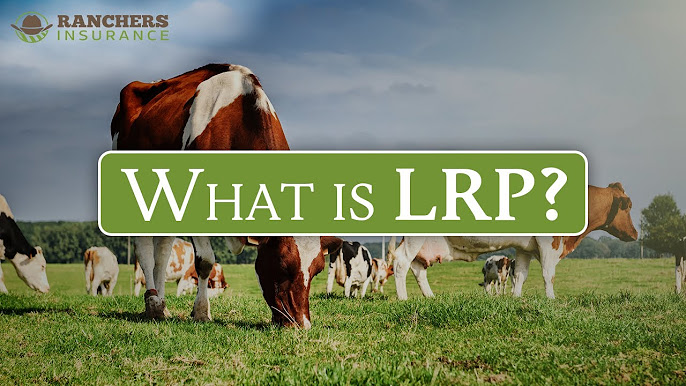Expert Guidance: Bagley Risk Management Techniques
Expert Guidance: Bagley Risk Management Techniques
Blog Article
Key Factors to Think About When Picking Livestock Danger Security (LRP) Insurance Coverage
When assessing choices for Animals Danger Security (LRP) insurance coverage, a number of essential elements require cautious consideration to make sure efficient risk management in the agricultural field. Picking the appropriate protection choices tailored to your particular livestock procedure is extremely important, as is recognizing exactly how superior prices associate with the degree of security provided. Additionally, the qualification requirements for different kinds of animals and the versatility of the policy to adjust to altering situations are essential elements to consider. The performance and transparency of the insurance claims process can considerably affect the overall experience and economic results for livestock manufacturers. By strategically browsing these vital variables, manufacturers can safeguard their financial investments and reduce possible risks properly.
Coverage Options
When considering Livestock Risk Protection (LRP) insurance, it is essential to understand the numerous insurance coverage choices offered to mitigate threats in the farming industry. Livestock Threat Defense (LRP) insurance coverage provides different protection options tailored to meet the varied needs of animals manufacturers.
One more important coverage alternative is the recommendation period, which determines the size of time the coverage is in impact. Manufacturers can select the recommendation duration that best matches their production cycle and market problems. Furthermore, coverage levels and prices vary based upon the type of animals being insured, giving manufacturers the flexibility to customize their insurance prepares according to their specific needs.
Understanding the various coverage alternatives available under Animals Risk Protection (LRP) insurance is essential for manufacturers to make informed choices that effectively secure their animals operations from market unpredictabilities.
Premium Expenses

Livestock Risk Defense (LRP) insurance provides essential insurance coverage alternatives tailored to mitigate threats in the farming industry, with a considerable element to consider being the calculation and framework of premium expenses. These include the kind and number of animals being insured, the protection level chosen, the existing market costs, historical cost data, and the size of the protection duration.
Insurance companies assess historical data on livestock costs and manufacturing prices to determine a proper costs that mirrors the degree of risk involved. It is crucial for livestock producers to very carefully review premium prices and coverage options to ensure they are properly secured against prospective monetary losses due to damaging market problems or unpredicted occasions.
Qualified Animals
The resolution of qualified livestock for Animals Threat Security (LRP) insurance coverage entails careful factor to consider of specific standards and features. Livestock types that are typically qualified for LRP insurance coverage include feeder livestock, fed swine, cattle, and lambs.
Feeder cattle, for example, are generally eligible for LRP protection if they drop within specified weight arrays. Lambs are an additional classification of animals that can be considered for LRP insurance coverage, with variables such as weight and age playing an important function in establishing their eligibility.
Prior to picking LRP insurance for livestock, producers need to carefully examine the qualification standards described by the insurance service provider to guarantee their pets fulfill the necessary demands for a fantastic read insurance coverage.
Plan Flexibility
Policy adaptability in Livestock Threat Security (LRP) insurance enables producers to customize coverage to fit their specific demands and risk administration methods. This flexibility encourages livestock producers to tailor their insurance policy policies based on aspects such as the type of livestock they possess, market conditions, and private threat tolerance degrees. By supplying customizable alternatives, LRP insurance allows manufacturers to efficiently handle their threat exposure while safeguarding their animals procedures against unanticipated market volatility.
Cases Process
Upon experiencing a loss or damage, producers can start the cases process for their Animals Risk Security (LRP) insurance coverage by without delay calling their insurance coverage company. It is critical for manufacturers to report the loss look here asap to quicken the cases process. When connecting to the insurance supplier, manufacturers will certainly require to provide detailed information regarding the event, including the date, nature of the loss, and any type of appropriate paperwork such as veterinary records or market costs.

After the analysis is total, the insurance coverage service provider will certainly decide relating to the case and communicate the result to the manufacturer. If the claim is authorized, the manufacturer will obtain payment according to the regards to their Animals Risk Security (LRP) insurance coverage plan. Bagley Risk Management. It is essential for producers to be aware of the insurance claims procedure to make certain a smooth experience in case of a loss

Conclusion
In conclusion, when selecting Animals Threat Defense (LRP) insurance policy, it is necessary to think about protection choices, premium costs, qualified livestock, policy versatility, and the claims procedure. These crucial aspects will help ensure that farmers and ranchers are appropriately safeguarded against possible dangers and losses related to their livestock operations. Making an educated decision based upon these considerations can eventually bring about far better monetary protection and tranquility of mind for animals producers.
Animals Threat Protection (LRP) insurance policy provides various insurance coverage options tailored to fulfill the diverse requirements of livestock manufacturers.The resolution of qualified animals for Animals Danger Security (LRP) insurance coverage entails cautious factor to consider of specific linked here criteria and features.Plan versatility in Livestock Danger Defense (LRP) insurance permits producers to tailor insurance coverage to fit their details needs and take the chance of management methods.Upon experiencing a loss or damage, manufacturers can initiate the claims process for their Livestock Danger Security (LRP) insurance by quickly contacting their insurance coverage copyright.In conclusion, when picking Livestock Risk Security (LRP) insurance policy, it is essential to consider coverage choices, premium costs, qualified animals, policy flexibility, and the claims process.
Report this page